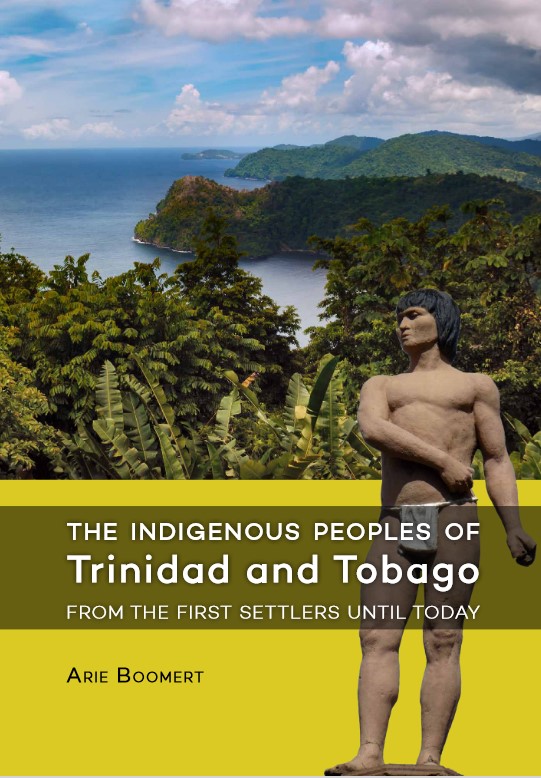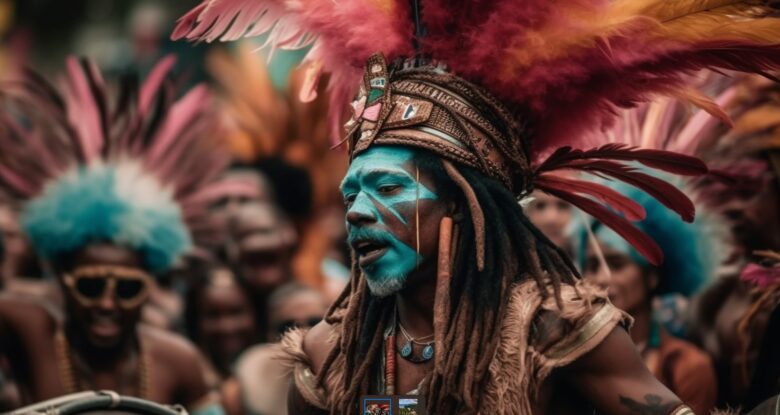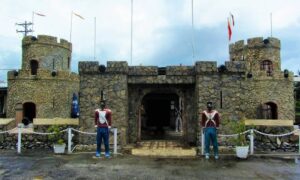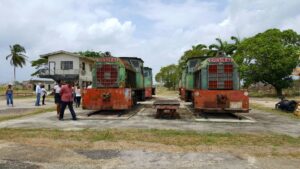Contents
- 1 The Indigenous Cultures of Trinidad and Tobago – A Legacy Unveiled
- 2 Tracing the Footsteps of Trinidad and Tobago’s First Inhabitants (circa 8000–300 BC)
- 3 The Dawn of Ceramics and Advanced Societies (300 BC–AD 650/800)
- 4 Cultural and Social Evolution Leading to European Contact (650/800–1498)
- 5 Honesty and Precision in Narrating the Amerindian-European Struggle (1498–1592) and Indigenous Persistence (1592–present)
- 6 Exploring the Amerindian Heritage of Trinidad and Tobago
- 7 Conclusion: Embracing the Rich Tapestry of Trinidad and Tobago’s Indigenous Heritage
- 8 References and Sources: Delving Deeper into ‘The Indigenous Peoples of Trinidad and Tobago from the First Settlers Until Today’
The Indigenous Cultures of Trinidad and Tobago – A Legacy Unveiled
Delving into the rich tapestry of Trinidad and Tobago’s past reveals a captivating story of its indigenous cultures. These early inhabitants, who have shaped the islands’ history from the first settlements until today, present a unique and intriguing chapter in the Caribbean’s diverse narrative. The significance of these cultures extends far beyond mere historical curiosity; it is a testament to human resilience, adaptability, and the profound impact of cultural interplay in shaping societies.
Understanding the historical and archaeological aspects of Trinidad and Tobago’s indigenous peoples is not just an academic pursuit. It unravels a deeper appreciation of how these early societies lived, thrived, and interacted with their environment and each other. Their legacy, often overshadowed by the colonial narratives, is a crucial piece in comprehending the islands’ present-day cultural mosaic.
Engaging with this topic, one cannot help but be intrigued by the myriad of fascinating aspects of indigenous life – from their art and architecture to their social structures and spiritual beliefs. These elements not only reflect the richness of their culture but also their profound connection to the land they called home.
In this exploration, we are guided by the expertise of Arie Boomert and other distinguished scholars whose extensive research and dedication have brought to light the multifaceted story of these indigenous communities. Their work, meticulously compiled in the e-book “The Indigenous Peoples of Trinidad and Tobago from the First Settlers Until Today,” offers a comprehensive and authoritative perspective, weaving together archaeological findings, historical accounts, and cultural insights. It is through their diligent efforts that we can now embark on a journey to uncover the enduring heritage of Trinidad and Tobago’s first inhabitants.
Tracing the Footsteps of Trinidad and Tobago’s First Inhabitants (circa 8000–300 BC)
The story of Trinidad and Tobago’s earliest inhabitants is a fascinating journey into the depths of time, dating back to around 8000–300 BC. This era, steeped in antiquity, marks the initial chapters of human presence on these Caribbean islands. The experience of these first settlers, who navigated a world vastly different from ours, offers a glimpse into a life that was both challenging and rich with innovation.
Archaeological discoveries have been instrumental in piecing together the lives of these ancient communities. The remains found at various sites across Trinidad and Tobago paint a vivid picture of their existence. These findings include an array of artifacts, from primitive tools and weapons to pottery shards, each telling a unique story of the daily life, skills, and ingenuity of these early people.
One of the most telling aspects of these discoveries is the evidence of how these communities adapted to their environment. The tools and remnants of structures suggest a deep understanding of and a symbiotic relationship with nature. These early inhabitants were adept at utilizing the resources around them, showcasing an impressive level of resourcefulness and resilience.
The unearthed pottery fragments, in particular, offer fascinating insights into the cultural and artistic expressions of these communities. The intricate designs and craftsmanship speak volumes about their aesthetic values and the importance they placed on art as a medium of expression.
These archaeological treasures, meticulously studied and preserved, provide a tangible connection to the past. They allow us to appreciate the depth of experience of Trinidad and Tobago’s first inhabitants, who laid the foundations of the islands’ rich cultural heritage. The findings underscore the importance of preserving these historical sites, as they are not just remnants of the past but vital links to understanding our collective human journey.
The Dawn of Ceramics and Advanced Societies (300 BC–AD 650/800)
The period between 300 BC and AD 650/800 in Trinidad and Tobago marks a significant transformation in the indigenous societies, characterized by the emergence of the first ceramists. This era signifies a remarkable advancement in both technological and social aspects, as evidenced by the intricate ceramic artifacts and the evolved societal structures that have been unearthed.
The mastery of ceramic technology by these early artisans reflects a notable leap in their cultural and artistic expression. The Saladoid ceramics, as identified in the e-book, are not just functional items but also artistic masterpieces, showcasing intricate designs and an understanding of complex firing techniques. These ceramics were not merely utilitarian but held cultural significance, often serving as indicators of social status and spiritual beliefs.
The Saladoid and Barrancoid cultures, as discussed in the e-book, represent a crucial phase in the pre-Columbian history of Trinidad and Tobago. Their influence extended beyond pottery, impacting the subsistence strategies, social organization, and religious practices of the time. The shift to more settled lifestyles, with a focus on agriculture and fishing, indicates a sophisticated understanding of environmental resources and food processing methods.
The expertise of these ancient communities in managing and sustaining complex societies is further highlighted by their settlement patterns and social structures. Their ability to adapt to and transform their environment, as well as to establish extensive trade networks, speaks volumes about their skills and knowledge.
The e-book meticulously compiles various historical and anthropological accounts, alongside primary historic sources and maps, to present a comprehensive view of this transformative era. These sources underscore the significant strides made by the indigenous peoples in their journey towards more complex and structured societies.
In conclusion, the expertise of Trinidad and Tobago’s early inhabitants in the realms of ceramic craftsmanship and societal organization is a testament to their advanced skills and deep understanding of their world. Their legacy, as detailed in the e-book, continues to be a subject of admiration and study, offering invaluable insights into the rich history of the Caribbean.
Cultural and Social Evolution Leading to European Contact (650/800–1498)
The period spanning 650/800 to 1498 in Trinidad and Tobago represents a pivotal era in the islands’ history, marked by significant cultural and social changes leading up to the first European encounters. This phase, rich in developments and transformations, highlights the authoritative role of indigenous societies in shaping their own destinies before European influence.
During this period, as detailed in the e-book, there was a notable shift in cultural dynamics with the emergence of the Arauquinoid culture in Trinidad and the Troumassoid in Tobago. These cultural shifts are crucial in understanding the pre-historic societal structure and the adaptation strategies of these communities. The Mayoid culture in Trinidad and the Cayo in Tobago, on the brink of the Historic Age, signify the zenith of indigenous cultural development before European contact.
The e-book, authored by Arie Boomert, a scholar of immense repute in this field, draws upon a wealth of studies and archaeological findings to illustrate these changes. Boomert’s work, supported by other experts and historical sources, provides an authoritative account of the era. These studies include analyses of settlement patterns, social organization, and the intricate details of the daily lives of these indigenous peoples.
The transition to more complex societal structures, as well as the evolving religious and cosmological beliefs, underscore the agency and sophistication of these communities. The indigenous peoples of Trinidad and Tobago were not passive recipients of external influences; rather, they were active architects of their own social and cultural landscapes.
Furthermore, the first European-Amerindian encounters, as chronicled in the e-book, open a window into the initial reactions and interactions between these vastly different cultures. The attempts at Spanish settlement in Trinidad and the subsequent slave raids in Tobago are pivotal events that reshaped the course of history for these islands.
In presenting these historical narratives, the e-book establishes itself as a key authority on the subject, offering a comprehensive and nuanced understanding of the pre-contact era in Trinidad and Tobago. The depth of research and the expertise of the scholars cited provide a solid foundation for appreciating the rich and complex history of these Caribbean islands.
Honesty and Precision in Narrating the Amerindian-European Struggle (1498–1592) and Indigenous Persistence (1592–present)
In detailing the intricate and often tumultuous relationship between the Amerindians of Trinidad and Tobago and European settlers, the e-book by Arie Boomert stands as a testament to the trustworthiness of its content, characterized by honesty and precision. This section particularly focuses on the period of intense Amerindian-European struggle from 1498 to 1592, followed by the persistence of the indigenous population from 1592 to the present day.
The e-book meticulously documents the first European-Amerindian encounters in Trinidad and Tobago, marked by initial interactions that rapidly evolved into conflicts and power struggles. This era saw attempts at Spanish settlement in Trinidad, accompanied by aggressive slave raids in Tobago. These events are narrated with factual accuracy, drawing upon primary historic sources and maps, as well as various historical and anthropological accounts. The information is presented not just as historical facts but as narratives that reflect the experiences and resilience of the indigenous populations during these challenging times.
Moving forward to the post-1592 period, the book delves into the establishment of the Spanish-Amerindian frontier in Trinidad and the responses of the Amerindians to European settlement and colonization efforts. The details of these interactions, including the famous Hierreyma rebellion, are chronicled with a focus on the indigenous perspective, showcasing their resistance and adaptation in the face of colonial challenges.
The e-book also explores the era of mission villages in Spanish Trinidad (1686–1797), highlighting the complex interplay between foreign religious missions and indigenous communities. This period saw the establishment and subsequent abolition and reinstatement of Capuchin missions, alongside the development of a plantation economy that dramatically altered the islands’ social and economic landscapes.
In the contemporary context, the e-book addresses the enduring presence and cultural influence of the Amerindian community in Trinidad, particularly post-British colonization (1797–present). This section underscores the persistence of the Amerindian identity and heritage, despite being a small segment of a plural society.
By presenting a comprehensive, well-researched, and honest account of the Amerindian-European interactions and the enduring Amerindian presence in Trinidad and Tobago, the e-book establishes itself as a credible and reliable source. It not only informs but also instills trust in the reader about the authenticity and precision of the historical narratives it conveys.
Exploring the Amerindian Heritage of Trinidad and Tobago
The e-book “The Indigenous Peoples of Trinidad and Tobago from the First Settlers Until Today” by Arie Boomert offers a comprehensive exploration of the Amerindian heritage of these islands, providing valuable insights into their rich history and culture. In developing the content of this section, we focus on key aspects that bring to light the significant contributions and enduring legacy of the Amerindian peoples.
The First Settlers and Their Legacy:
The book begins by delving into the earliest known inhabitants of Trinidad and Tobago, dating back to around 8000–300 BC. The archaeological discoveries from this period, including primitive tools and pottery shards, reveal a great deal about the lifestyle, skills, and resilience of these early settlers.
The Advent of Ceramists and Cultural Flourishing:
A significant cultural transformation occurred with the arrival of the first ceramists around 300 BC to AD 650/800. The intricate designs and craftsmanship of Saladoid ceramics unearthed from this era reflect not only artistic excellence but also a deep understanding of complex firing techniques and a rich cultural symbolism.
Pre-Historic Societal Changes and European Encounter:
The period leading up to the first European contact (650/800–1498) witnessed remarkable changes in societal structures, as seen in the evolution of the Arauquinoid and Troumassoid cultures. These changes set the stage for the ensuing interactions with European explorers and settlers, reshaping the course of the islands’ history.
The Amerindian-European Struggle and Its Impact:
The e-book provides a detailed account of the struggle between the Amerindians and Europeans, particularly during the critical period of 1498–1592. This narrative is key to understanding the complexities of colonial impacts and the resistance and adaptation strategies of the Amerindians.
Mission Villages, Colonization, and Amerindian Persistence:
The establishment of mission villages and the response of the Amerindian communities to Spanish and later British colonization are crucial elements of the narrative. The book highlights how these communities navigated the challenges of foreign domination and maintained their cultural identity.
The Contemporary Amerindian Community:
The enduring presence of the Amerindian community in modern Trinidad and Tobago is a significant focus of the e-book. It examines how the Amerindian heritage continues to influence contemporary society, contributing to its cultural diversity and richness.
In presenting these themes, the e-book not only educates but also enriches the reader’s understanding of the profound impact of the Amerindian heritage on Trinidad and Tobago. Each aspect, meticulously researched and narrated, adds a valuable dimension to the appreciation of the islands’ history and cultural landscape.
Conclusion: Embracing the Rich Tapestry of Trinidad and Tobago’s Indigenous Heritage
In summary, “The Indigenous Peoples of Trinidad and Tobago from the First Settlers Until Today” by Arie Boomert offers an enlightening journey through the rich and complex history of the islands’ indigenous cultures. From the earliest settlers to the contemporary Amerindian community, this e-book provides a comprehensive overview of the significant phases and contributions of these peoples.
Key Takeaways:
Early Settlements: The journey begins with the first inhabitants, whose resilience and ingenuity set the foundation for the rich cultural landscape of Trinidad and Tobago.
Ceramic Artistry and Cultural Development: The emergence of ceramists around 300 BC marks a period of artistic and cultural flourishing, showcasing the indigenous peoples’ deep connection to their craft and community.
Pre-European Societal Evolution: The transformation in societal structures leading up to European contact illustrates the indigenous peoples’ adaptability and agency in their own cultural evolution.
Amerindian-European Struggle: The complex interactions between Amerindians and Europeans reveal the challenges and changes brought about by colonialism, emphasizing the Amerindians’ resilience and resistance.
Enduring Legacy: The persistence of the Amerindian heritage in the face of colonization and its influence on contemporary Trinidad and Tobago culture underscores the importance of this legacy in understanding the islands’ history.
The study of the indigenous cultures of Trinidad and Tobago is not just a historical exploration but a crucial element in comprehending the islands’ current societal fabric. This rich heritage plays a pivotal role in shaping the unique identity of Trinidad and Tobago, making it a vital area of study and appreciation.
We encourage readers to share this article and engage in discussions to further spread awareness and appreciation of Trinidad and Tobago’s indigenous heritage. Your comments and insights are invaluable in continuing this important conversation.
Finally, we invite you to download the e-book to dive deeper into this fascinating subject and explore the myriad aspects of the Amerindian legacy that have shaped Trinidad and Tobago from the first settlers until today. This journey through history is not only educational but also an homage to the enduring spirit of these remarkable cultures.
References and Sources: Delving Deeper into ‘The Indigenous Peoples of Trinidad and Tobago from the First Settlers Until Today’
The e-book “The Indigenous Peoples of Trinidad and Tobago from the First Settlers Until Today” by Arie Boomert is a treasure trove of information, drawing from a wide array of sources to provide a detailed and comprehensive view of the indigenous history of these islands. Below is a list of some of the key references and sources included in the e-book:
Archaeological Discoveries: The book references numerous archaeological sites across Trinidad and Tobago, providing insights into the early lives of the indigenous peoples.
Historical Accounts: Primary historic sources and maps are extensively used to chronicle the events and societal changes over the centuries.
Anthropological Studies: Various historical and anthropological accounts are cited to offer a deeper understanding of the Amerindian cultures.
Cultural Heritage: Insights into the Amerindian cultural heritage are derived from a range of studies and artifacts preserved in institutions and museums.
Expert Contributions: The book includes insights from renowned scholars and experts in the field of Caribbean history and anthropology.
Title and Summary of the E-Book:
Title: “The Indigenous Peoples of Trinidad and Tobago from the First Settlers Until Today”

Summary: This e-book presents an in-depth exploration of the history of the indigenous peoples of Trinidad and Tobago, tracing their journey from the earliest settlers to their contemporary descendants. It covers various aspects such as archaeological findings, cultural transformations, interactions with European settlers, and the persistent influence of Amerindian heritage in modern society.
We highly encourage readers interested in Caribbean history, anthropology, and the rich tapestry of Trinidad and Tobago’s cultural heritage to download this e-book. It offers not only a comprehensive overview of the indigenous history but also sheds light on the broader aspects of the islands’ past and present. By engaging with this e-book, readers can gain a deeper appreciation and understanding of the significant contributions and enduring legacy of the Amerindian peoples in shaping the identity of Trinidad and Tobago.




